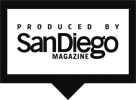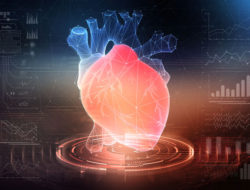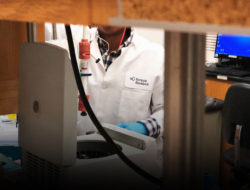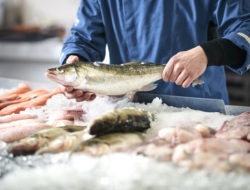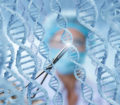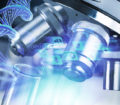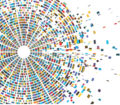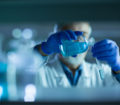1 VIP Connection
By Marie Tutko
If you took a trip on JetBlue or Virgin America before this summer, your in-flight Wi-Fi was likely better than the connection President Obama had aboard Air Force One. To get one of the world’s most iconic aircraft up to speed, the federal government tapped ViaSat—a Carlsbad-based satellite firm—to upgrade the system, since the company has previously powered commercial airlines with faster Internet.
Air Force One is already equipped to allow the president to coordinate full-scale military operations from 35,000 feet—there are three networks and 87 phones on board—but ViaSat says the new broadband connection will create a true “situation room in the sky.” Its Ku- and Ka-band satellites will enable secure HD video conferencing and the streaming of real-time data and intel. ViaSat was awarded $73 million for a one-year contract.
How fast is the new connection? Neither the feds nor ViaSat will say, of course, but V3, a U.K. tech news site, estimates it’s 100 Mbps—a speed any Pokémon player would envy. Ken Peterman, a senior vice president at ViaSat, says the contract went into effect June 1, and that service and the equipment rollout have commenced.
In the long term, the White House plans to replace the aging Air Force One (it’s almost 30 years old) with a brand-new customized Boeing 747-8, set to take off in 2024.
As Obama prepares to return to civilian life, he told the New York Times that one thing he’ll miss most about being POTUS is the plane, and joked that he’s not looking forward to taking off his shoes to go through airport security.
2 Another First for San Diego
Scientists with ties to San Diego keep reaching for the stars. Astronaut Kate Rubins, a UC San Diego alum, recently became the first person to sequence DNA in space. Rubins is a microbiologist who works on the International Space Station, where she successfully sequenced mouse DNA, along with that of viruses and bacteria, more than 200 miles above Earth. NASA says this feat is a step toward building technology that could identify life beyond our planet.
3 Calling all Creatives
The ultimate DIY festival returns to San Diego
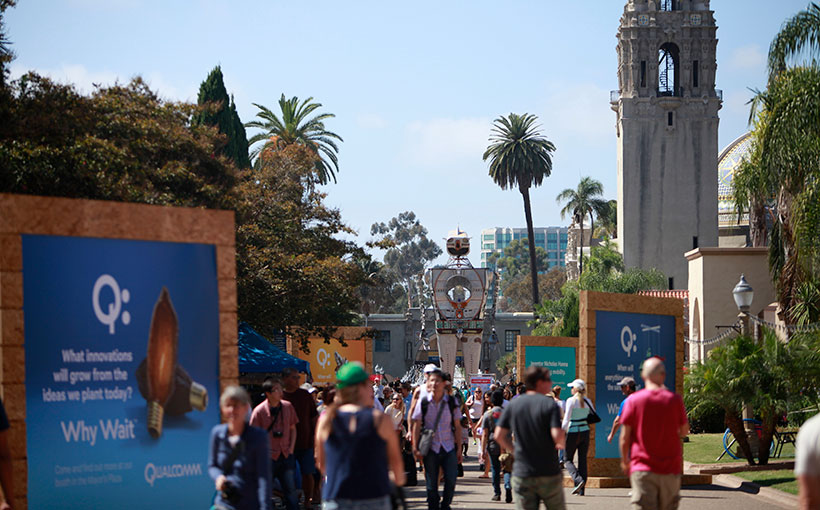
Remember how much fun show-and-tell was as a kid? The weekend Maker Faire throughout Balboa Park, October 1–2, is like a classroom demonstration on a much grander scale.
The San Diego edition of a popular Bay Area festival, Maker Faire is one of the most high-profile events where everyday inventors, hobbyists, artists, and techies can gather and share their work with the public alongside nonprofits and large companies. The exhibits are taking over ten Balboa Park museums, Spanish Village, and The Old Globe. And since this is San Diego, you can expect to find craft beer on tap, too!
Here’s what this year’s Maker Faire has in store:
- More than 200 exhibitors. You can see everything from huge robots and steampunk machines to 3-D board games and artwork. If you’re the sporty type, the founders of Reef and ElliptiGO bikes and Tony Finn, who invented wakeboarding, will all have stands at the festival.
- An immersive beer garden. Sample craft and home brews at the Museum of Man and learn about the science behind beer while you’re sampling suds.
- Hands-on activities. Fire air rockets, make an art display out of tape, and try out a virtual reality headset.
Visit sandiego.makerfaire.com for the complete schedule and vendor list.
4 Follow Me!
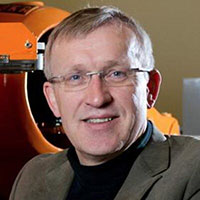 If Terminator or HAL 9000 come to mind when you hear “robotics,” Henrik Christensen’s Twitter account will calm your anxiety. The new director of UC San Diego’s Contextual Robotics Institute is passionate about how robots can better our lives, and he separates facts from science fiction.
If Terminator or HAL 9000 come to mind when you hear “robotics,” Henrik Christensen’s Twitter account will calm your anxiety. The new director of UC San Diego’s Contextual Robotics Institute is passionate about how robots can better our lives, and he separates facts from science fiction.
Here are five cool things we learned from his account:
- The Aloft Hotel in New York City has a robotic bellhop that will store your suitcases.
- More than 25 percent of all robots are sold in China, and the rate is still growing.
- We’re not capable of making killer robots anytime soon—our advancements in artificial intelligence just aren’t designed for it.
- Nine percent of jobs in a total of 21 countries could eventually be automated, but robots won’t totally replace us.
- A motion is being considered by the European Union to classify robotic workers as “electronic persons.” Christensen is not convinced it’s a good idea.
5 Innovation Insider: Companies, Meet Capital
By Mike Krenn
One big challenge facing San Diego’s technology startups is access to capital, especially early-stage venture capital. And getting face time with a big VC firm is easier said than done.
This is why San Diego Venture Group, a business advocacy nonprofit, orchestrated a private event at Del Mar Fairgrounds in August that got local early-stage companies in front of 40 VCs. A who’s who of some of Silicon Valley’s most prominent firms were in attendance, including Kleiner Perkins, August Capital, Draper Fisher Jurvetson, Maveron, Canaan Partners, and Scale. Together, the funds manage more than $10 billion.
Thirty startups were chosen to attend, from a pool of 140 applicants. They came ready to pitch—everyone crowded into a large suite three hours before the first horse race, and company CEOs pitched intrigued investors looking for the next big deal. Conversations continued as the horses ran, and after the eighth race, it was off to dinner and drinks in Del Mar.
Most companies left with a handful of follow-up meetings, and the VCs left with a much-improved impression of San Diego. They’ve already verified they’ll be back next year for more.
6 What’s Inside Counts
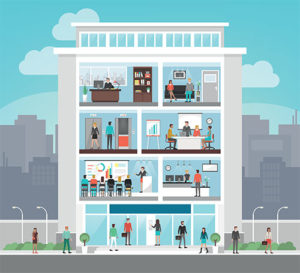 When a building for a new office space breaks ground, the first question asked now is whether or not it will be eco-friendly. For decades, architects and builders have used LEED, a list of standards set by the U.S. Green Building Council, to measure a project’s sustainability. While energy-saving high-rises are great, what about the workers who toil inside all day?
When a building for a new office space breaks ground, the first question asked now is whether or not it will be eco-friendly. For decades, architects and builders have used LEED, a list of standards set by the U.S. Green Building Council, to measure a project’s sustainability. While energy-saving high-rises are great, what about the workers who toil inside all day?
Following in LEED’s footsteps, the International WELL Building Institute developed a new certification that acknowledges buildings that uplift workers’ well-being and better their health. The organization says we spend almost 90 percent of our time indoors (at home or at work), and that we desperately need access to fresh air and light. They advocate for office spaces to have outdoor seating areas, fitness centers, and open lobbies, and that on-site cafeterias serving healthy foods should be the new normal.
It’s a concept that’s still gaining momentum: Only 34 buildings in California are registered for the WELL Building Standard designation, and Phase III of La Jolla Commons is one of them.
7 Wise Words
“It’s time to change America’s STEM story, and with it, our trajectory. We need all students believing that STEM is at the root of public service, personal freedom, creativity, and belonging, because that’s exactly what it is.”
—Barbara McAllister, director of strategic initiatives and planning for Intel, in Stanford Social Innovation Review.
8 By the Numbers
A snapshot of where San Diego stands on innovation
No. 1: Qualcomm’s rank for holding Internet of Things patents
Source: Forbes
No. 3: Most patent-intensive region in the world
Source: San Diego Regional EDC
No. 11: Best city for entrepreneurs, out of 40 metropolitan areas
Source: Kauffman Foundation
8 Genomics Capital of the World
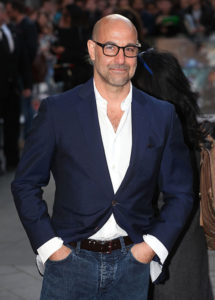 More than 250 doctors and researchers convened in San Diego in August for the Precision Medicine Leaders Summit, the first of what’s expected to be an annual event that will call the region home.
More than 250 doctors and researchers convened in San Diego in August for the Precision Medicine Leaders Summit, the first of what’s expected to be an annual event that will call the region home.
Unfamiliar with the term? Precision medicine is the practice of using individual data about a person’s body—say their genome or microbiome—to determine treatment, instead of prescribing all patients the same course of action. It drew attention in 2015 when President Obama announced a national initiative that provided $215 million for the cause.
Damian Doherty, editor of the Journal of Precision Medicine and organizer of the event, says San Diego was the most natural choice because so many of the field’s heavyweights are already here—Scripps, UCSD, Illumina—and that San Diego “may well be the genomics capital of the world.”
One name you might not have expected to see at the conference was Stanley Tucci. The actor, who lost his first wife to breast cancer, spoke via live broadcast about the importance of patient advocacy throughout the diagnostic and treatment process.
10 Dispatch: Updates and impacts from innovation around the globe
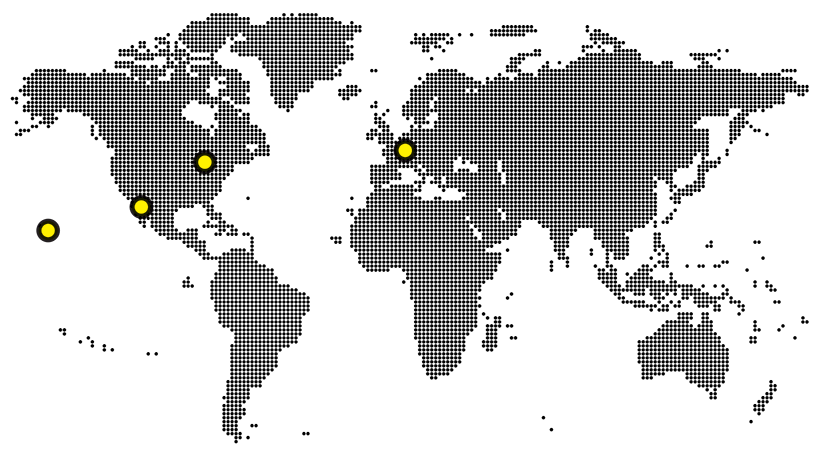
Mauna Loa, Hawaii
Bio-Dome
Six volunteers spent one year living in a confined dome that simulates a mission to Mars. The study ended in August, and the scientists immediately craved fresh fruits and veggies once they left.
Los Angeles, California
Series A Funding
Petco gave $10 million to Petnet, a startup that makes smart pet feeders and is developing a pet food delivery service.
Cincinnati, Ohio
On Demand
Students at Xavier University got the first pizza ATM in the country, which cooks up and dispenses a 12-inch pie in three minutes.
Stuttgart, Germany
Top Gear
Bay Area car-sharing service FlightCar quietly (and suddenly) shut down in June, selling its technology platform to luxury automaker Mercedes-Benz.
11 Wise Words
“Look at art and architecture, the importance of design and technology—there are problem solving skills that people need to learn that don’t necessarily fit everyone’s definition of math and science.”
—James Brown, executive director of STEM Education Coalition, in an interview with Fox News.
12 Skurting the Airport Line
Technology has drastically changed how we travel, but the process of renting a car at the airport—waiting for a shuttle bus to the off-site lot, and standing in another line at the counter—remained idle for years. Harry Hurst, a wunderkind computer programmer (he finished high school at 12 years old!) had a bad experience with renting a car while visiting L.A., and shared his sentiments with two associates who happened to be Y Combinator graduates. That conversation led Hurst to found Skurt, a startup that delivers rental cars to you at your home, hotel, or Airbnb.
Through the Skurt app, users scan their driver’s license, upload a credit or debit card, select the car, and then watch the vehicle’s delivery in real time, à la Uber. Everette Taylor, a Skurt spokesperson, says rates are as low as $21/day for a midsize sedan, and that the company broke a long-held industry rule: They rent to young drivers under age 25, and don’t penalize them with fees. Skurt is available in L.A. and Orange County, and soft-launched its service in San Diego in August. Taylor says we can expect to see eye-catching billboards and a cool marketing campaign around town.
13 Legacy: Remember the Titans
San Diego recently lost three philanthropists and innovators who contributed billions of dollars to the economy and our research and civic institutions.
Entrepreneur Larry Bock, 58, arguably kicked off the biotech hub in San Diego when he co-founded Illumina, and headquartered the $21.1-billion-dollar company on the Torrey Pines mesa. His love for science led him to create the USA Science and Engineering Festival, which drew crowds of 350,000 this year.
Real estate mogul Conrad Prebys, 82, was called one of the most generous people in the world. He left his name on many institutions throughout San Diego, from the zoo to universities. He notably gave Scripps Health a gift of $45 million to create the Scripps Prebys Cardiovascular Institute.
Pauline Foster, 82, was the first female president of the Jewish Community Foundation and gave $15 million to UCSD to create endowments and the Pauline and Stanley Foster Pavilion for Cancer Care at Jacobs Medical Center.
Their legacies will serve generations of people in this city, and are a reminder about the importance of giving back.
14 Turning Distractions into Tools
By Katherine Connor
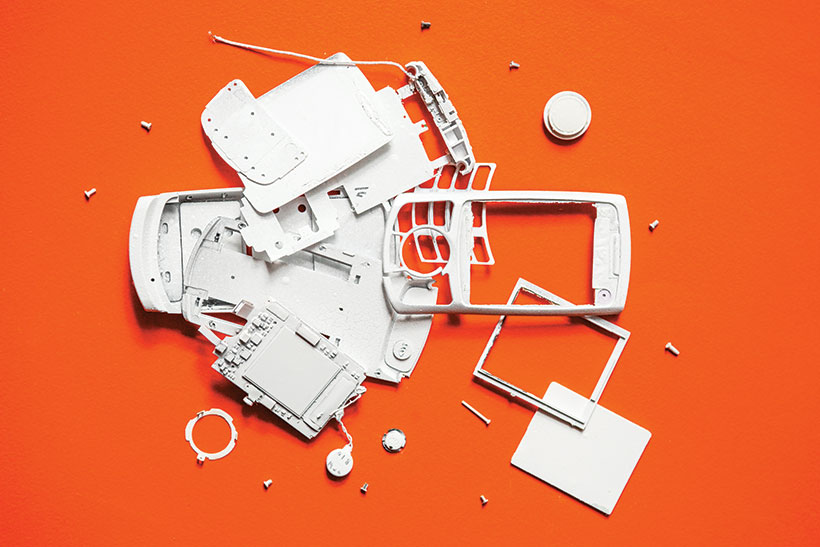
“Put your phone away!” has got to be the phrase used most by teachers today. Where educators see a pain point, a couple of undergrads at San Diego State University saw an opportunity.
Founded in July 2014, CourseKey is a classroom engagement app that allows professors and students to interact with one another and the curriculum during lectures.
“Students never forget cell phones—they’re devices that professors can’t get them off of,” says Ryan Vanshur, co-founder of CourseKey. “If you can give the class information to them where their eyes are the entire time and leverage those devices, instead of distractions you can turn those into tools.”
The app, which works on any connected device, is the first to provide GPS-based attendance, and allows students to answer and ask questions, and complete quizzes during class. It also generates analytic reports for professors based off student responses and interaction, has virtual teaching assistant functionality, and can host videos, FAQs, email, and chat. The beta version of the app makes it easier for STEM teachers to engage with students by allowing picture and video files for answers in equation form.
CourseKey got its start at SDSU’s Zahn incubator and quickly moved on to EvoNexus. Its user base has already exploded from two professors to 112, who teach an average of 3,500 students each.
Co-founder Luke Sophinos was recently named one of 29 Thiel Fellows in the 2016 cohort, which means he got $100,000 to put college on hold—he had one class left!—and instead learn by doing. He splits his time between San Diego and Silicon Valley, working to develop business and venture connections for the company.
Speaking of venture capital, CourseKey is a thoroughly San Diegan startup—all three investors in its seed round are locals: Steve Altman and Paul Jacobs of Qualcomm, and Michael Stone of TPG Growth.
15 The Right Track
NASCAR got in on the STEM action and launched a diversity internship for a select group of 26 college students. Isabel D’Elia, who is studying environmental engineering at UC San Diego, made the cut this year.
16 School of the Future
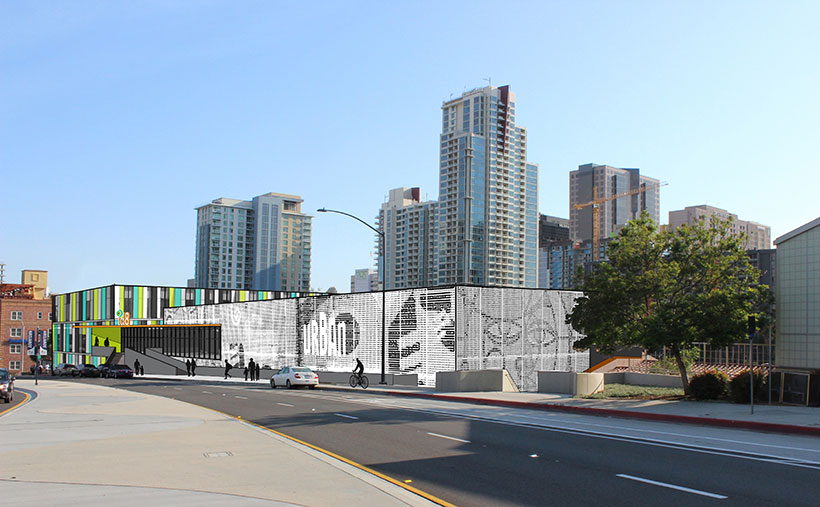
Parents, imagine your teenager looking forward to going to school in the morning. The director of a new charter school says their innovative, engaging curriculum will make students feel that way.
ID8 High Academy, an extension of Urban Discovery Academy, just started classes in the East Village. The charter school’s STEAM-y courses are based on project learning and problem solving, and are very hands-on. Eleventh graders will be able to sign up for off-campus internships nearly anywhere they desire, like an architecture firm, a video production company, or at a lab extracting DNA.
When the new campus is ready later this fall, classrooms will look nothing like what most of us remember. Instead of assembly-line rows of desks, student workstations can easily be moved or modified, walls will be painted in bright colors, and work from all students—not just those with championship trophies and first-place ribbons—will be displayed.
“Most schools were designed in the early 1900s to teach you how to have a factory job,” says Chris Wakefield, director of ID8. “Careers now are interdisciplinary. The jobs we’re training them for do not exist yet.”
ID8 is still accepting new students.
17 Making STEM Happen
Online tutorials are everywhere, and you can learn how to do just about anything in a matter of minutes on YouTube. SolidProfessor, a Little Italy–based company, took this approach and developed a huge cache of engaging videos that teach engineering concepts.
MIT and Northrop Grumman already use them, but the firm isn’t just after big-name clients: They really believe in giving back, and have provided $3 million in grants to local schools for improved STEM programs. San Diego State University, City College, Southwest High School in Nestor, and Francis W. Parker School in Linda Vista are some of the schools that have received funds. The company is gearing up to provide another round of grants for 2017.
18 Consider This
The number of STEM and STEAM jobs in the U.S. since 2010 will increase by 14 percent by 2020, according to the U.S. Dept. of Education. A recent study by McKinsey & Company says the number of graduates in STEM fields is growing just 0.8 percent every year.
19 TEDx and the ‘Age of Magic’
By Kim Richards
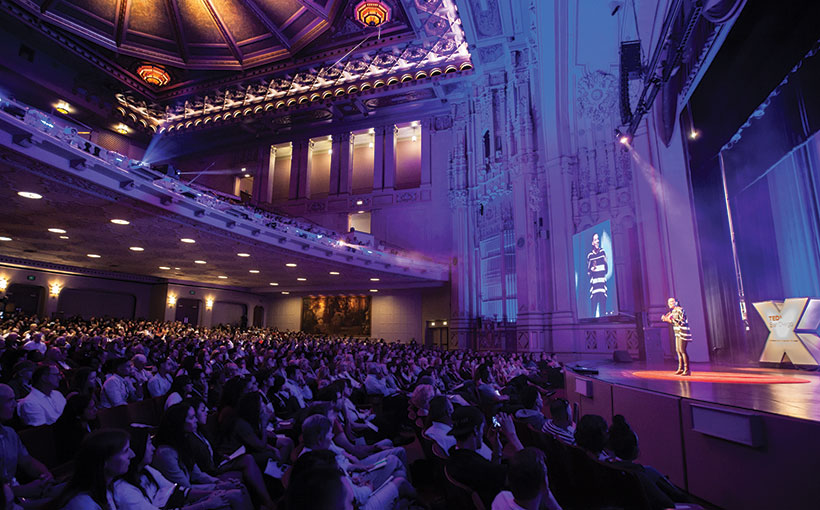
Perhaps you’re familiar with the TED Talks that your friends share on Facebook. Did you know that San Diego hosts its own TED-like event every year?
TEDxSanDiego returns to Copley Symphony Hall on October 22, bringing together innovators, visionaries, and learners. This year’s theme, “The Age of Magic,” celebrates the aspects of life that fill us with awe and wonder. “For the very first time, all of the speakers are San Diegans,” says Mark Lovett, organizer of the event.
Twelve speakers will take the stage, each presenting a 12-minute talk. Here are some highlights:
- Navrina Singh, head of Qualcomm’s global innovation program, will talk about the power of personal transformation.
- Dawn Barry, vice president of life sciences and applied markets at Illumina, will share how we are discovering the essence of our humanity through genomics.
- Reginald Jones, CEO at Jacobs Center for Neighborhood Innovation, will reveal an experiment in civic philanthropy as a way to revitalize a neighborhood.
Plus, don’t miss Innovation Alley on B Street, which showcases 20 of San Diego’s most creative startups. “Most attendees are surprised to learn that all of this innovation is happening right in their own backyard,” Lovett says.
For tickets and more information, visit tedxsandiego.com
20 Sisterhood
JLabs hosted its first Women in Bio Pitch Challenge this summer, inviting several startups to its La Jolla campus. Naomi Travers, a nurse-practitioner who invented a disposable urine collection device for women, won the challenge and a prize for her new company, Alembra Medical.
21 Masterpiece on the Mesa
By Dan Letchworth
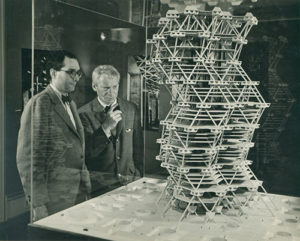
Dr. Jonas Salk knew the power of uniting science with art back in 1959, when he told rising architect Louis Kahn that he wanted “to be able to invite Picasso” to his planned research institute on the Torrey Pines mesa. Kahn soon became one of the most prominent figures of 20th-century Modernism, and his inspiring, monumental design for the Salk Institute is considered an architectural masterpiece.
Louis Kahn. The Power of Architecture at the San Diego Museum of Art collects hundreds of models, sketches, and plans for the first retrospective of the artist’s work in decades and the first-ever display of his paintings and drawings. An opening-day symposium will feature presentations by the museum’s associate curator, a Salk representative, and the author of an upcoming Kahn biography; photography by Woodbury University School of Architecture students will also accompany the exhibit.
November 5–January 31, 2017, sdmart.org
Tags: Ideas, Innovation, Tip Sheet
